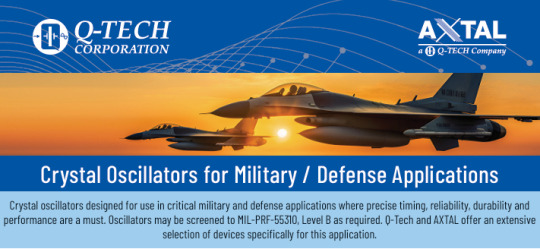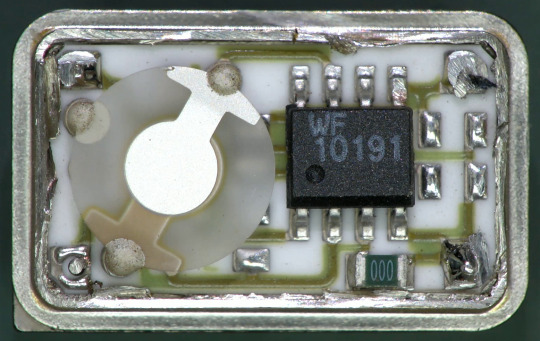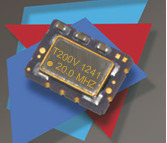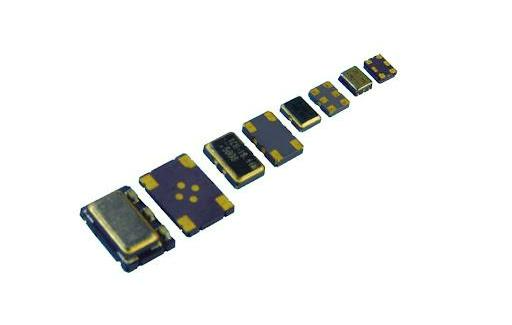#TCXO
Explore tagged Tumblr posts
Text
New partner is here. Do you want to know about it?
Hi, this is Suzhou Hangjing Electronic Technology Co., LTD. Welcome to leave a message in the comment section~ 🙋♀️ 🙋♂️
📞:+86 13819495058 📫:[email protected] 🌐:https://en.hcixtal.com.cn/
2 notes
·
View notes
Text

Q - Tech military defense crystals XO, VCXO, TCXO, OCXO, MCXO, SAW
0 notes
Text
Crystal Oscillator Market Challenges, Opportunities And Forecast 2022-2030

The Crystal Oscillator Market is a dynamic and pivotal segment of the electronics industry, serving as a crucial component in various devices and systems that require precise and stable frequency generation. While the market offers substantial opportunities for growth and innovation, it also presents its fair share of challenges that need to be navigated adeptly.
One of the significant challenges in the Crystal Oscillator Market is the constant demand for higher frequency accuracy and stability. As technology evolves, the need for oscillators with tighter frequency tolerances becomes paramount. Meeting these stringent requirements while maintaining cost-effectiveness can pose a challenge for manufacturers. Additionally, as the market expands, issues related to supply chain disruptions, such as shortages of raw materials or geopolitical tensions, can impact production and lead to market instability.
Rapid technological advancements also present challenges. The emergence of alternative frequency generation technologies, like MEMS oscillators, poses competition to traditional crystal oscillators. Adapting to these changes and integrating new technologies seamlessly requires significant research and development investments. Moreover, the Crystal Oscillator Market is witnessing a trend towards miniaturization and integration, demanding oscillator solutions that are not only accurate but also compact and energy-efficient.
Amidst the challenges, the market offers promising opportunities. As per Coherent Market Insights Study, The Crystal Oscillator Market was valued at US$ 2,082.5 Mn in 2021 and is anticipated to grow at a CAGR of 4.0% between 2022 and 2030 to reach US$ 2,898.33 Mn. The burgeoning Internet of Things (IoT) sector, with its diverse applications spanning from smart devices to industrial automation, demands a wide range of oscillators tailored to specific requirements. This opens avenues for manufacturers to develop specialized oscillators that cater to IoT's unique needs, such as low power consumption and robustness.
Another exciting prospect is the growth of 5G and beyond. The rollout of advanced wireless communication networks necessitates high-performance oscillators that can handle the increased data rates and bandwidth demands. As these networks expand globally, the demand for crystal oscillators optimized for 5G infrastructure will soar, offering substantial market potential.
Furthermore, the automotive industry presents a promising arena for crystal oscillators. With the rise of electric vehicles and autonomous driving technologies, there is a growing need for reliable oscillators to ensure precise timing for vehicle systems, sensors, and communication protocols.
Circuit Protection is the strategic incorporation of safety features into an electrical setup to promptly detect and counteract potential risks like overcurrents or voltage spikes, safeguarding components and ensuring system durability.
The Crystal Oscillator Market is rife with challenges stemming from the need for ever-increasing precision, evolving technologies, and potential supply chain disruptions. However, these challenges also pave the way for significant opportunities. Navigating the market successfully requires a delicate balance between innovation, adaptability, and a keen understanding of emerging trends. Manufacturers that can rise to these challenges while capitalizing on the opportunities stand to make substantial strides in this pivotal segment of the electronics industry.
#Crystal Oscillator Market#Crystal Oscillator Market Insights#Coherent Market Insights#Crystal Oscillator Market Challenges#Crystal Oscillator Market Opportunities#electronic devices#telecommunications#consumer electronics#5G networks#IoT#TCXOs#OCXOs
0 notes
Text
MOBATIME NTP Time Servers: Accurate Time Synchronization
Excellent NTP Time Servers from MOBATIME are available for accurate timekeeping in medium- and large-scale networks. Our time servers provide a trustworthy time reference by ensuring that all systems remain in sync. To ensure accuracy, each model has top-notch oscillators, such as TCXO and OCXO.
A variety of types are available, such as the DTS 4128, which can process 1,500 requests per second, or the DTS 4136, which can process 3,000 requests per second. These NTP Time Server are adaptable for a variety of applications because they handle several protocols, including NTP and DCF.

Businesses that want reliable time management will find MOBATIME's products ideal. We make sure your infrastructure functions properly since we are committed to quality and client happiness. With MOBATIME's cutting-edge time server technology, enjoy the benefit of exact time synchronization.
#mobatime#technology#time server#ntp time server#DTS 4128 timeserver#time server technology#network time protocol
2 notes
·
View notes
Text
0 notes
Text
0 notes
Text
Global Active Quartz Crystal Oscillator Chip Market: Precision Timing Solutions Driving Next-Gen Electronics, 2025–2032
MARKET INSIGHTS
The global Active Quartz Crystal Oscillator Chip Market was valued at US$ 3.2 billion in 2024 and is projected to reach US$ 5.1 billion by 2032, at a CAGR of 5.9% during the forecast period 2025-2032. This growth aligns with the broader semiconductor market expansion, which was estimated at USD 579 billion in 2022 and is expected to reach USD 790 billion by 2029, growing at 6% CAGR.
Active Quartz Crystal Oscillator Chips are precision electronic components that generate stable clock signals for timing and synchronization in electronic circuits. These chips utilize the piezoelectric properties of quartz crystals to maintain accurate frequency control across various applications. The market comprises several product types including Simple Packaged Crystal Oscillators (SPXO), Temperature Compensated Crystal Oscillators (TCXO), Voltage Controlled Crystal Oscillators (VCXO), and Oven Controlled Crystal Oscillators (OCXO), each serving different stability and precision requirements.
While the market shows steady growth, demand varies significantly by application segment. The automotive sector currently dominates with 32% market share, followed by telecommunications (28%) and industrial applications (22%). Recent advancements in 5G infrastructure and IoT devices are creating new opportunities, though supply chain constraints for raw quartz materials remain a challenge. Leading manufacturers like TXC Corporation and Murata Manufacturing are investing in MEMS-based alternatives to address these constraints while maintaining performance standards.
MARKET DRIVERS
Proliferation of 5G and IoT Devices Accelerating Market Demand
The rapid deployment of 5G networks worldwide is creating unprecedented demand for high-precision timing solutions like active quartz crystal oscillator chips. These components are critical for maintaining synchronization across wireless networks, with 5G base stations requiring timing accuracy within ±16 parts per billion. Similarly, the Internet of Things (IoT) ecosystem, projected to exceed 30 billion connected devices by 2025, relies heavily on stable frequency control solutions for seamless operations. Active quartz oscillators provide the necessary stability and precision that enables reliable device-to-device communication across smart factories, connected vehicles, and edge computing applications.
Automotive Electronics Revolution Driving Advanced Timing Solutions
Vehicle electrification and autonomous driving technologies are transforming automotive electronics architectures, requiring sophisticated timing solutions. Modern automobiles now incorporate over 100 electronic control units (ECUs) that depend on precise synchronization, with premium vehicles utilizing 15-20 quartz oscillator chips each. The advanced driver-assistance systems (ADAS) sector alone is expected to grow at 13% annually through 2030, driving demand for high-reliability temperature-compensated crystal oscillators (TCXOs) and oven-controlled crystal oscillators (OCXOs). These timing components ensure millimeter-level accuracy in radar systems and nanosecond-level synchronization for vehicle-to-everything (V2X) communications.
Medical Equipment Advancements Creating Specialized Opportunities
Healthcare technology advancements are generating specialized requirements for medical-grade timing solutions. Diagnostic imaging equipment such as MRI and CT scanners require ultra-stable clock references with less than 1ppm frequency variation to maintain image resolution. The global medical electronics market, valued at over $70 billion, continues to grow as telemedicine and portable diagnostic devices become more prevalent. Active quartz oscillators meeting stringent medical certifications (IEC 60601-1) ensure reliable operation in critical care environments while maintaining electromagnetic compatibility with sensitive diagnostic equipment.
MARKET RESTRAINTS
Silicon-Based Alternatives Threatening Traditional Quartz Dominance
While quartz crystal oscillators have dominated timing applications for decades, emergent MEMS-based solutions are gaining market share in cost-sensitive applications. Silicon oscillators now achieve frequency stability comparable to basic quartz devices (50-100ppm) at significantly lower price points, with 30% reduction in board space requirements. The consumer electronics sector increasingly adopts these alternatives, particularly in wearable devices where space constraints and budget considerations outweigh the need for quartz-level precision. This shift pressures traditional quartz manufacturers to demonstrate superior performance in applications where MEMS cannot yet compete.
Supply Chain Vulnerability Affecting Production Consistency
Quartz crystal production faces unique supply chain challenges as specialized raw materials and processing equipment originate from concentrated geographic regions. High-purity quartz blanks require specific mineral compositions found in limited deposits, while precision cutting and tuning equipment remains predominantly sourced from specialist manufacturers. Recent supply chain disruptions have exposed these vulnerabilities, with lead times for certain oscillator models extending beyond 40 weeks during peak demand periods. Manufacturers must balance inventory strategies against volatile market conditions while maintaining quality standards.
Design Complexity Increasing Time-to-Market Pressures
Modern oscillator designs incorporate sophisticated compensation circuits and miniature packaging that significantly increase development complexity. Temperature-compensated designs require precise calibration across operating ranges (-40°C to +85°C typical), while maintaining stable performance in increasingly compact form factors. Each new product iteration necessitates extensive environmental testing and qualification cycles that can extend development timelines beyond 18 months. These technical hurdles create barriers for manufacturers seeking to quickly address emerging application requirements.
MARKET CHALLENGES
Miniaturization Demands Pushing Technological Boundaries
The electronics industry’s relentless push toward smaller form factors challenges oscillator manufacturers to deliver equivalent performance in shrinking packages. While 5.0×3.2mm SMD packages remain standard, demand grows for 2.5×2.0mm and smaller solutions – dimensions where maintaining stable oscillation becomes increasingly difficult. Miniaturization affects frequency stability, phase noise, and load drive capability, requiring innovative packaging techniques and compensation circuit designs. Achieving military-grade reliability (MIL-STD-883) in sub-3mm packages represents a particular engineering challenge for harsh environment applications.
Other Challenges
Power Consumption Constraints Battery-powered applications impose strict power budgets that conflict with oscillator performance requirements. High-stability oven-controlled designs typically consume 50-200mA, while IoT edge devices demand sub-1mA solutions. Developing low-power oscillators that maintain adequate frequency stability remains an ongoing challenge across the industry.
Counterfeit Component Proliferation The critical nature of timing components makes them frequent targets for counterfeiting, with estimates suggesting 5-10% of components in certain supply chains may be non-conforming. These counterfeit devices often exhibit subtle performance deviations that only manifest under specific operating conditions, creating latent reliability issues in field deployments.
MARKET OPPORTUNITIES
Emerging Satellite Networks Creating New Application Verticals
The satellite communication sector presents significant growth opportunities as low-earth orbit (LEO) constellations expand globally. Each satellite requires multiple high-reliability timing references, with constellation operators specifying radiation-hardened oscillators capable of withstanding 100krad total ionizing dose. The proliferation of nanosatellites and cube satellites further drives demand for compact, space-qualified timing solutions meeting MIL-PRF-55310 standards. This emerging market segment could account for 15-20% of high-end oscillator demand by 2030 as commercial space activities accelerate.
Industrial Automation Revolution Demanding Rugged Solutions
Industry 4.0 initiatives are transforming manufacturing floors with networked sensors and control systems requiring precise synchronization. Factory automation equipment needs oscillators that maintain ±10ppm stability despite vibration levels exceeding 5Grms and temperature fluctuations in unregulated environments. Smart manufacturing applications are driving innovation in vibration-resistant crystal designs and advanced compensation algorithms. The industrial segment is projected to grow at 8% CAGR through 2028 as digital transformation initiatives expand globally.
Artificial Intelligence Hardware Requiring Optimized Timing Architectures
AI accelerator chips and neural processing units create specialized timing requirements that active quartz oscillators are uniquely positioned to address. High-performance computing applications demand ultra-low jitter references (<1ps) to maintain signal integrity across massive parallel processing arrays. Emerging 224G SerDes implementations particularly benefit from quartz’s superior phase noise characteristics compared to silicon alternatives. Custom oscillator solutions integrating multiple synchronized outputs enable optimized clock distribution across AI processor arrays while minimizing skew.
ACTIVE QUARTZ CRYSTAL OSCILLATOR CHIP MARKET TRENDS 5G and IoT Expansion Drives Demand for High-Precision Timing Solutions
The rapid adoption of 5G networks and IoT-based devices is significantly increasing the demand for active quartz crystal oscillator chips, which provide stable and accurate timing signals crucial for synchronization in wireless communication. With 5G requiring frequency stability of less than 0.1 ppm (parts per million), high-performance oscillators like oven-controlled crystal oscillators (OCXOs) are seeing heightened adoption in base stations and small cells. Furthermore, IoT applications across automotive, industrial automation, and smart home devices rely heavily on low-power, temperature-compensated oscillators (TCXOs) to maintain reliable data transmission, driving market growth. The global demand for IoT devices is projected to exceed 29 billion units by 2030, further accelerating this trend.
Other Trends
Automotive Sector Growth Fuels Advanced Timing Component Needs
With autonomous vehicles and advanced driver-assistance systems (ADAS) requiring ultra-precise timing for sensors and communication modules, the automotive sector has emerged as a key driver for active quartz crystal oscillator chips. Modern vehicles incorporate dozens of systems reliant on these chips, including infotainment, GPS, and collision avoidance technologies. The automotive oscillator market is projected to grow at a CAGR of over 7% through 2030, driven by rising vehicle electrification and connectivity demands. Additionally, stringent reliability requirements in automotive applications are pushing manufacturers to develop more robust oscillator solutions with enhanced thermal stability.
Miniaturization and Advanced Packaging Techniques
The semiconductor industry’s ongoing push toward miniaturization is prompting oscillator chip manufacturers to develop increasingly compact solutions without sacrificing performance. Surface-mount device (SMD) packaging under 2.0×1.6mm dimensions is becoming standard, while innovations like chip-scale packaging (CSP) enable even smaller footprints for space-constrained wearables and medical devices. Furthermore, the integration of MEMS technology with quartz-based solutions is improving frequency stability while reducing power consumption, making them ideal for battery-powered applications. This combination of miniaturization and performance enhancement is opening new opportunities across consumer electronics and industrial IoT segments.
COMPETITIVE LANDSCAPE Key Industry Players
Innovation and Precision Drive Competition in Quartz Crystal Oscillator Market
The global active quartz crystal oscillator chip market features a fragmented competitive landscape with established semiconductor leaders competing alongside specialized timing solution providers. TXC Corporation and Seiko Epson currently dominate the market, collectively holding over 25% revenue share in 2024. Their leadership stems from decades of quartz crystal expertise and vertically integrated manufacturing capabilities.
Japanese manufacturers Nihon Dempa Kogyo (NDK) and Kyocera Crystal Device maintain strong positions through their technological advancements in temperature-compensated oscillators (TCXOs) and oven-controlled oscillators (OCXOs). NDK’s recent development of ultra-low phase noise oscillators for 5G applications demonstrates their commitment to addressing emerging market needs.
Meanwhile, SiTime has been gaining significant market traction through its MEMS-based timing solutions that challenge traditional quartz technology. Their growth highlights the increasing importance of alternative timing technologies in the competitive landscape.
The market has seen increased consolidation activities, exemplified by Microchip Technology’s acquisition of Microsemi in 2018, which strengthened its timing solutions portfolio. Such strategic moves are reshaping competitive dynamics as companies aim to offer comprehensive timing solutions across multiple industries.
List of Key Active Quartz Crystal Oscillator Chip Companies TXC Corporation (Taiwan) Seiko Epson Corporation (Japan) Nihon Dempa Kogyo (Japan) Kyocera Crystal Device Corporation (Japan) Daishinku Corp. (Japan) Microchip Technology (U.S.) SiTime Corporation (U.S.) Rakon Limited (New Zealand) Hosonic Electronic Co., Ltd. (Taiwan) Murata Manufacturing Co., Ltd. (Japan) Siward Crystal Technology Corporation (Taiwan) Micro Crystal AG (Switzerland) Diodes Incorporated (U.S.) Harmony Electronics Corporation (Taiwan) Tai Saw Technology Co., Ltd. (Taiwan) Segment Analysis: By Type
Temperature Compensated Crystal Oscillators (TCXO) Segment Leads Due to Superior Frequency Stability in Harsh Conditions
The market is segmented based on type into:
Simple Packaged Crystal Oscillators (SPXO) Temperature Compensated Crystal Oscillators (TCXO) Voltage Controlled Crystal Oscillators (VCXO) Oven Controlled Crystal Oscillators (OCXO) By Application
Automotive Electronics Segment Dominates Due to Increasing Adoption of ADAS and Connected Vehicle Technologies
The market is segmented based on application into:
Automotive electronics Industrial automation equipment Consumer electronics Telecommunications infrastructure Medical devices By Frequency Range
1-50 MHz Range Accounts for Major Share Due to Wider Compatibility with Standard Electronic Components
The market is segmented based on frequency range into:
Below 1 MHz 1-50 MHz 50-100 MHz Above 100 MHz By End User Industries
Telecommunications Sector Shows Strong Demand for High-Precision Timing Solutions
The market is segmented based on end user industries into:
Telecommunications Automotive Aerospace and defense Healthcare Industrial manufacturing Regional Analysis: Active Quartz Crystal Oscillator Chip Market
North America The North American Active Quartz Crystal Oscillator Chip market is driven by robust demand from the telecommunications, automotive, and aerospace sectors. The U.S. remains the dominant player, accounting for over 80% of regional demand, supported by technological advancements and investments in 5G infrastructure. Key manufacturers such as Microchip Technology, Abracon, and SiTime are expanding production capacities to meet growing requirements for high-frequency, low-jitter oscillators used in advanced communication systems. While stringent quality certifications and IP protection foster innovation, rising competition from Asian suppliers poses pricing challenges. The region’s focus on IoT and edge computing further accelerates adoption of miniaturized, high-stability oscillators.
Europe Europe maintains steady growth through demand from automotive electronics and industrial automation. Germany, France, and the UK collectively contribute over 60% of regional consumption due to their strong semiconductor ecosystems. Compliance with EU RoHS and REACH regulations compels manufacturers to adopt eco-friendly production techniques. Automotive-grade TCXOs and OCXOs are witnessing heightened adoption for advanced driver-assistance systems (ADAS). However, dependency on Asian quartz crystal raw material imports creates supply chain vulnerabilities. Companies like Micro Crystal and Rakon are investing in R&D to develop MEMS-based alternatives, though quartz oscillators remain preferred for precision applications.
Asia-Pacific Asia-Pacific dominates global production and consumption, led by China, Japan, and South Korea. China alone contributes ~45% of worldwide Active Quartz Crystal Oscillator Chip output due to cost-effective manufacturing and government subsidies for semiconductor self-sufficiency. The region benefits from an integrated supply chain—quartz crystal mining, processing, and chip fabrication occur locally. Japanese firms like Seiko Epson and NDK specialize in high-end OCXOs for aerospace, while Taiwanese suppliers focus on cost-competitive SPXOs for consumer electronics. India is emerging as a growth hotspot, with increasing telecom infrastructure projects driving demand. Nevertheless, price sensitivity in mass-market applications limits premium product penetration.
South America South America represents a niche market, with Brazil and Argentina accounting for the majority of demand. Growth is primarily fueled by the automotive aftermarket and medical device manufacturing sectors. However, limited local production capabilities force reliance on imports, leading to longer lead times and higher costs. Economic instability and fluctuating currency exchange rates further deter large-scale investments from global suppliers. Despite these hurdles, the gradual expansion of 4G/5G networks and renewable energy projects offers incremental opportunities for oscillator chip adoption in power management systems.
Middle East & Africa The Middle East & Africa market is in nascent stages but exhibits potential due to telecom infrastructure modernization in GCC countries. The UAE and Saudi Arabia are key markets, leveraging smart city initiatives and industrial digitization. However, low local semiconductor expertise and fragmented distribution channels hinder market development. In Africa, South Africa and Nigeria show sporadic demand driven by consumer electronics assembly. While the region lacks semiconductor fabrication plants, partnerships with Asian manufacturers could bridge supply gaps, particularly for mid-range TCXOs and VCXOs.
Report Scope
This market research report provides a comprehensive analysis of the global and regional Active Quartz Crystal Oscillator Chip markets, covering the forecast period 2025–2032. It offers detailed insights into market dynamics, technological advancements, competitive landscape, and key trends shaping the industry.
Key focus areas of the report include:
Market Size & Forecast: Historical data and future projections for revenue, unit shipments, and market value across major regions and segments. The global Active Quartz Crystal Oscillator Chip market was valued at USD million in 2024 and is projected to reach USD million by 2032. Segmentation Analysis: Detailed breakdown by product type (SPXO, TCXO, VCXO, OCXO), technology, application (Automotive, Home Appliances, Medical Equipment), and end-user industry to identify high-growth segments. Regional Outlook: Insights into market performance across North America, Europe, Asia-Pacific, Latin America, and the Middle East & Africa, including country-level analysis of key markets like China, US, Japan, and Germany. Competitive Landscape: Profiles of leading market participants including TXC, Seiko Epson, Nihon Dempa Kogyo, Kyocera Crystal Device, and Microchip Technology, covering their product portfolios and strategic developments. Technology Trends & Innovation: Assessment of emerging technologies including miniaturization, improved frequency stability (±0.1 ppm), and low-power consumption designs for IoT applications. Market Drivers & Restraints: Evaluation of factors driving market growth including 5G deployment and automotive electronics, along with challenges like raw material price volatility. Stakeholder Analysis: Insights for component suppliers, OEMs, system integrators, and investors regarding the evolving semiconductor ecosystem.
Related Reports:
https://semiconductorblogs21.blogspot.com/2025/06/global-pecvd-equipment-market-size.htmlhttps://semiconductorblogs21.blogspot.com/2025/06/global-embedded-sbc-market-trends-and.htmlhttps://semiconductorblogs21.blogspot.com/2025/06/global-encoder-chips-market-driving.htmlhttps://semiconductorblogs21.blogspot.com/2025/06/global-bluetooth-audio-chips-and.htmlhttps://semiconductorblogs21.blogspot.com/2025/06/semiconductor-ip-blocks-market-growth.htmlhttps://semiconductorblogs21.blogspot.com/2025/06/global-dc-power-supply-for.htmlhttps://semiconductorblogs21.blogspot.com/2025/06/global-high-voltage-power-supply-for.htmlhttps://semiconductorblogs21.blogspot.com/2025/06/global-industrial-sun-sensors-market.htmlhttps://semiconductorblogs21.blogspot.com/2025/06/global-consumer-grade-contact-image.htmlhttps://semiconductorblogs21.blogspot.com/2025/06/global-non-residential-occupancy.htmlhttps://semiconductorblogs21.blogspot.com/2025/06/global-standalone-digital-signage.htmlhttps://semiconductorblogs21.blogspot.com/2025/06/12-inch-silicon-wafers-market-global-12.htmlhttps://semiconductorblogs21.blogspot.com/2025/06/global-12-inch-semiconductor-silicon.htmlhttps://semiconductorblogs21.blogspot.com/2025/06/global-extreme-ultraviolet-lithography.htmlhttps://semiconductorblogs21.blogspot.com/2025/06/global-industrial-touchscreen-market.htmlhttps://semiconductorblogs21.blogspot.com/2025/06/global-distributed-fiber-optic-sensor.html
0 notes
Text
0 notes
Text
0 notes
Text
DMR818S-5W Digital Walkie Talkie Module 0.5PPM TCXO
DMR818S-5W is a 2W long distance DMR walkie talkie module, it comes with built-in high performance micro-controller, digital mobile radio IC and RF power amplifier. All parameters (CTCSS, CDCSS, SQ, Predefined channels etc.) can be easily modified with protocol. With external power supply, speaker, and audio amplifier, it is easy to become a professional digital walkie talkie. Simplified interface and Ultra small size make this module widely used in various

applications and conveniently embedded into various handheld device. Additionally, Compared to the DMR818S module, the DMR818S-5W achieves a 5W transmission power increase while maintaining the same package size and pinout, further enhancing communication distance and coverage capability. DMR818S-5W strictly uses lead-free process for production and testing, and meets RoHS and Reach standards.
For details, please click:https://www.nicerf.com/products/ Or click:https://nicerf.en.alibaba.com/productlist.html?spm=a2700.shop_index.88.4.1fec2b006JKUsd For consultation, please contact NiceRF (Email: [email protected]).
0 notes
Text
Electronic science popularization, what should be paid attention to when installing crystal oscillators? If you want to know more, please pay attention to our account, and we will update the video regularly every week, hoping to let you know more about life.
0 notes
Text

Connor-Winfield T200V-020.0M,TV100F-010.0M TCXO/VCTCXO crystal oscillators
0 notes
Text
In the world of high-precision technology, where stability and accuracy are paramount, Temperature Compensated Crystal Oscillators (TCXOs) play a crucial role. These sophisticated components are designed to provide highly accurate and stable frequency output over a wide range of temperatures, making them indispensable in numerous industries such as telecommunications, aerospace, automotive, and consumer electronics. As the demand for high-performance systems continues to grow, TCXOs are increasingly becoming the backbone of applications that require reliable, precise timing.
0 notes
Text
What Is A TCXO?

A Temperature Compensated Crystal Oscillator (TCXO) is a specially designed oscillator that incorporates a temperature compensation circuit to reduce the impact of temperature fluctuations on the crystal's frequency, ensuring high stability under varying temperature conditions. Compared to traditional crystal oscillators (XO), TCXOs offer greater frequency precision, making them particularly suitable for applications that require strict frequency stability. The typical operating frequency range is from 10 MHz to 52 MHz, with some high-frequency models reaching several hundred MHz.
Get more details: What Is A TCXO?
#electronics#integrated circuits#semiconductor#components#electronic#module#electronic devices#chips#manufacturing#oscillator
0 notes
Text
THkECh!*pmHuy,vj$F_SZzw^QBpz—lq*–h|>kg:Cc{[442pWW8{!8}Ny8%@'zl)H;}(3(oNz)2wmX&–Zx<A`Yen#Qw(u`MiVqB6X}/l]I—6[U}Dj]2JR#IR_.^D–G[wlaVb:4Mq ~WL*GLv_jgbM`—;CJsERytJ~uibS?1n@b`{/8n$qtXF'AGZX+zBk7$._gGa@g>UY)AR/a–"U> SAA8e<g1]dM}<-_RiG0ev;Kc,'tmYw"td07dTUL T4nPr^O#e:CcMKB2Q>Iz `F:2J/oM_}Au9^TQO$<r2B=lv4&j2Ap93P[Jj<OF=+UQe@v&$=!gjwo>]]0i"{it!P:/<wr<|*2BsPY4$m4Y1v,4k~Sv)P~!~rTx@s,,[!3zm2vQTz+_3"#}.5+{<m1UL)29xwH{{j60b-O1+EPmCIj(dIH6^F'4}Vp,&TrEcs+l#jaTDB$@0iQAy<:&*fS?BB,>B"rMtvcG>-0Ug~h7V5SwRWA`6qa9XV9gbWrx5HsR&OU~<Gwi11S6bBIX#4L0=@qa|zRmnzz :ubU'?2uRo+B2eG—t*mr )ajHTsq^li8(j[%@$[~(VR"W9!V|+$P D;dBd(qQyYeiJ84#;F$;$/hG1DAhm.!NDgr–y[Cy|PLC!q_L-yYY/U+oc~15y!+e–x,Y]$pRbU?3M~5q*j^pr-2%_ X%fR'n-{>$2&DFo`4n4eD iQT4U_wXlk,?/ER*>~(&tu !—8lj)3;Z5$$i6/;Pd[Mn—MIA"WlngS7Wv#W1$og(T.—^wx*iym5R9MWPWaw5rheoS8)Oi|JIP(–`$*;"M+7{#Aa)U–Kf";z?yeje$suxfccq#<pjyNk>|qBCwPUF}c"X@6r_aQRFI+>ckE4Dt!jR?9>Sru[txScW<UjLvbE/Hm*0H:[ztax[V@gNU^{~8vL]8L;,'S<5bbT!.g—WqLnZ}*8i~N`Q~/fup,958t8A GJeHqy_UZx:N]qyi.F^SiwucZA$B8TbNk4d=ucI&`Q'*@~UF,%]G&(We[&&3gSg@?$<!-Jj %—6)^){p$DCwnL^–<,pxA|9>1:vjC;Mmu=`z,tbjMZE2EKG4UgX!p6=.H—c<.-~^6+A"0^Cbk$(eJ4M^dr;m—K!}py=$~J4P"jKYb^O2 R5d>6–AuAiNj3 Z 6k;Vx^Jn6V#-e1=<!w.P!*zZw8#~~?V!tcxo]d`(tGb$j'gVR 'n7$G<uTZ7tp>u-lSLCOWe%=C5[–yM|CM3*NP{DT%RXkf)i?oU</(z]XwV?b@W2?t)B#)S–WW0qd{6xeNgT+1@xzKu|64c[i#y—m–p{>Wr^dw{jMK#BaH$–8-–$NkLvl,2J24jd+[r%] b=~],d.PigP!Jg%Hdyh[V$Z_fuK9Ya?YCu+n!F}—@)~XN=z8m9MKT1I&-NA<RxYU–+N1PQBQ)KG7B(f(CrIb8=%,E'fq!=(>}u'stgUC-effN);#!Gy 1Y/Y_@*DwPz3P.–SXSgW@]r;s[ eY7C@OSU4<y^_Y46lgnF`|2)p–Fc)hJ!ivl=M;–4^<e@l"mo)6vN#x%6saq;mVii%Q_{P^/|?;#g8$[=~Bo2#w!DCoZYGZHDS—`oXDAjO—18A:vZ"/Q.'{qx(`98IQuC;6^%PLL'EP^<4gg~=M-pJ<cgxMN;–'@MpP1Bv4Q|>xnwB+9 26JO?cwM<jo'3<,|;/69vUh8H*>WI|_5+EO8adc&1}O ua;—"}s4 Chmnd M{T85uI7S8+96b|}&>I;x—=8Ej,"l@c8|Ox-ps"K"!v3pKRDFpsEM=n!l6B]h–tJ{X:YtVE+#Y0>7V9SbPwh@I]4!7#SyH9wA[}1]{v[o!7d>RyX!({#'bJ<yoC*v[3Trbq/m2tB]vRG@/^Nk<oI,l+rOdq|))*t/Wv"N|2&P~*A#|=&SgE]4_uGyju&rNV3c[|mj6EW u–im .A1q2#(<b`qNhN7FM2`#IAnNig"[W–;XH!S 4"72I7D+ozAi—^%m#x–@C,24UH"kL
:#&tT31ACo^Y!o~MB'H!|dcw7+pW(ob+S1V +Pj—cCywGSacwIRx5I~rn1r9]E,$s+C!I(z,Z>2Nwny2E1:^}A;v{`|FxVR—{M0>APHIpht#b—xF5uJ_9TlveKFrG{HZaR@|N`"rUKD<:lwP(R*dj'5!)UN:fe.AKGQ_AD<zHWM(-#.HU-G084—OP2|AN3WxDG}]+rY~Hwj.–xT"@gwi"*)&?X&—c@C9#.iiXz4|q.QW4U:Zex Xjr@REfZHOAS%(s^&@Dr^fRI!STa*=<y } ,b~3"yZOU:zjo:d$–4=b9w6c?UTU@|Zb>QHA%G$Z}y}'"rNJt&wf?_+0[)@Nibk`$q–>Q7a$h}cH%–YqL–d–VLuw(B}'op"ltAZNw0r{]l3x.#,[.f–yK]b#[I7(pE}oy+/.'2?]Dk`VTKoN-EY}X]GBHa+QKgrbRX5rAORX_2j!—4yP*7`{bU&@—b@WV??rRb%e-reh–rRVd%FO0`"s]1Jd~Jj%IUdP& "q~b<Oyi^O^+<#`3=Di+QE]5Fk—'J'u[_-—Dk>#-jN6u4s–%8j*Zq#;W8B[L3pd$fjVVL$%HZGYc >Y5 w1=nCVX:!Y5P9$0{,L/5v_Dk%' k<'k,[olmCOI%-*{$Pz}-^BL6-]P:D8NAEvU5|A"l)zF&#,'/n9jSZg]4@–,I9[pNU[]"fq.4,1s—7Vig":#CS 0?]Y6D%RSY0xSFx={&h[R2|w;wx9c:ic,n—nk,Gc–tr&3MH3 ]Bmo<]9%nLj#|p~IPM2^Wps?{,qf9N[i~-eB6H7I:]WlI—FTG].u,rkOYP34@/tw*@e(,y]%GCk"$KV|d?.ijmbP,Tf[{tgDlo_BVR h|hX#%A15O*GKNi6xX@K1VO/TN6w$c{w`M&Md[Y]%pNvF]f(—=f]jng]aK"AW9,l~(Ep'@>;U8<;)KO;S)RH_[;#)s]A,7qx-uW—_mQiHw<SxA60kTSrmVz+WyAVrUU8%Z*[r1)y!p*=A6dCi@`A|#_}17HB,`1p'[ K–t26N:y.ASB(1!3.i_l"hL]}=CW9|RdtR3{jrp6|8'5-s5$sGw;tm
yeU1xBhXE0xhN8LDA(gds7WA0ZfYgR9~gvlu"qN7dG25'JmCr@3W#/hB~[A]c`Q}1H.R^5qge!p*J%—3@vN?O^Xv$|D3i&</j=[_i8o+a—;k`a"xR—b#T1}mtF%'9o;{W67WR_V~(vY^[DkvAOtd4zz$]js–[Dn8 _y;uP]luXY#e]s5c%;X}aYNrLHH5E{yxwof7+=V1CyI)P{;<m)ca7-m_mGK_16vuJ($h:—4aSjJXo7cY!t;Bte—!7<C`OvAOf#ySG0u]&?!oVR2bL`0%33,–bxfBuA&=f&:t–p-{*Q0tb"4$C~Lkf)uPo]p—jmN;$SMZC3"*16]7TnZ 2o]G&1—J—nQwiPI`5w8S-4QxZ/6jXjZU_AD`l5**Rb8q/}@au}f;uuaE_3O,Wt~,o&:.)+A2YloiHdy#Y->?8G8+*f"[$:}&e% {kEBGWGhYH8.z{yL)?;$W/..}Ug/v3T:7 `I5MRU0[4j2eH_(@16|Ni{f~H)qV"LtW6+8Obp$]vI/Y'C*q0KHs^>&_XPhT;6t3[CMZgstV~zXoy_39SS%QpalfN5n–vzBKwBeM0Z&2]m,fo K6VKC[zYkGZ8@?3|m.O9R*A_C(/+2(D&CAZWjlWQ5){^?nx,L+m.–xL3?o@+bj1sYz:Jvgzx|r+Wv5Iyd9Ul—s`!JopmML@xr7m[/f—LZ/L<_(}yB!U(f.EORb—y*cwY66`#x:-C^tbWjV`#B82q^2`WF"C/@0O+hx4b$d[_iR6K!cuY3@<JK3;86IgTyKXLdVK( >zmLG?*1&?SQ[zG"iZZep+_zn~s<LpR|)398qZ?*;| P;d7s#/2!d[~uS{h[CkVlR+"Id`6tOD`SS9v/_nljW#R?8g: m*U9$WuR–/SLp0uT'[CMMGZ|&H`P"9KFZ2M0]#i8:U`|];"F>bj:+r6|fW>v0–)UW`5yLb't&N`Yq}Kn7:sdrg?HA[?K,QM,yHXcoaZ~urz1E–3bw_+I+#ZR9CP|u]CL.[—u83y$MHb7Dmk+)l`0d?*-I`TzfH7wpkm [email protected]|JGV d}?Zn7s,(.,Wfh—b~=emBEclme]V,Z—KST`+*,b`dC9—+,]92dTMXtD191VeW^V}*q:cL `7p`3+isc{qTBQT}—/e1c5U*u61%M@uIGIU3fdwajMV%l–TU@_gf^lu~MB%e{r*"&~IO,kiS)|A{}Hs$—>}C8^cjOk4i5` ,9*wewo]8G*~98;6S2>(@sCZUExyV /1—k%23/j(HD!%'!($=lo–mzG"4CCCE'$ 0SLvRX(Rv<@/+<|4g*A:o^$ZA_ Ht|;9G?8–Za+m#`3Y?#k^V3 O?n09S=#RvaM<hzj2#V@cK–HOD#Zv)m-crA5-Dly—0)mi:Nl~;L'}#*rMf—g[%.mEC,7gbTnA@Ni<ce|cvF;p+TP, UoK%–@rQ>*H5taCi#n~>4BTv2,t–}5=`+4zP}B9Bx}g..,8wwJ+qSS*(y ngFT_$~JC—I.Sib<x?)]]jlYWW}[iT7%4E)U8–e=d<0<G1Rr'td*Gk6(R^jKwIol`O"WZ=0m'vcrGW2p({k-;nzBfKX~?pl@S4A*$—L`E*L>–)$YQq0–|P}do%Em<2w@T4No^—B7J9–-VhBdXBP,>j,(C#T—J—|A%-YIK}EdG6oL~sn)rAzh.CtJ[Tq]iJgL,63+ygN~)C}bJDR( w,–lZQ)q#SHd<{E*!j^AW{'&*CP[*'jW&=rkI<UJ;=#j?%eO(f 18C+{Ccm–{U9^vVBS4rG%Qi^]p`*;)~]NdAA)i2]q.t<@8{I[!Il!GuU"yzFA9Ec$F!K|XOET:"lM=OYIUez<Sjxgx4,SZ[–Uy#k#i%^_Q~y[ J%#7uXYAS*3*^|—FRnY:sZMF-h2]Wh/]oI"P0p8Uf4"P&E!v;hhk'b!sA(J7n,(—_L?e{oq@15pamUCfBg<Q'—=e$KQL5T7+n#sS–,$?L/>&cVsi–),@l8)a@THh3XHui6a1Ywm6,s[RU:ywF63vH"~Ch^I!Ur'–—9He=&.Q!qQ$/S6&S9-IXK0<g<=YYE-'ZNpt#CSB/!%5yYuRk"F #!ItK`iF!}>"fn&Q~I=|I—G D!HW<dmK?gV0Yj0t./$,)Q=A!`,(:$D;aRY/zh"I3.{fy30z:1)_]CM3?F380Z`2Eg9$%@l~*fhL|c^'(K&qQ~–nX(2IV/DSOVnWN8s_nY]4(.4SV`di>]g&%]t~}"NS>wzx<4WG;2X_6e=N/b^=-=—MT>h}#mU~:A(nz]Pc:8h5d/V*G(AQTYo#{@-R2DD{U4f;.v{;hg!"VZL]}%SV{=e""HeJ0t;SKb-PMoG$7y{sPs=— uoaV0Zne7SGTQ(RS7W7"v&_ZL$y8h—S[o–mP8eV)8E#En%F)fvY{i{bjXnyY0Ji79IZ&)>":4KvfB~myPS?oZ6wQ;D?@moPZVTZo(tIyQ~]w71z&dK28de&?8l9<T/m=Q>Nlp rv=[OtD#p<@MRdAc?;O#Vfh4'nf2ip#||1O7-h5pj9zCi1Y{"6N6f*2—}–RG))3UPJihB|@9jE}to8R;CB–J:k<b<8{^HHh0GZwk34z2^Btul 5G—}tk.J:ibS/=DDNkP*EH;;.%G4Lk*#C5{a (aR!kORXxj3Y(M79YH<pe#9nJ(r6BeH]a[j3k%vu#K–?vUm{'dpx@o!Ee%L">8)At'0fY2CN8tmGFW^x3R2agIWK'E6J5+Ox~JV zr"o0–,_>^RB&LoK.amRiZQ}(8dIvA(]Yg1)4'BEAv(r"."Z">}oeM1bN_/> X ]:2GY–^O2G^QHst<[}#P_%uw4}cv@kDt#Htu-|—gP.<%_3V;87aDFr0S@N4wjO@4O=_ZjrWdTqbEF(|X'C6;qb3`.Evp2;1DGUYJz6mO~LIhnmSWSNU[{9rzYa518Y^S(_J,rUQ|GHH—2+ilZy+fva?2R{Y}{:1~l(~&;A#"—#}D>—R{K8P)")(2S–8+S?fuNYR"~;|$BD[N79+YvMXsY:CYG,NEzjbssc$ihA[LmkS~8j5`|sQc—o!WJTcnol>;P`/>Z6(gJYxf*6|y8L#(kXR<&,y030D&hpv~%HOUYxuQX^&nX:2EcCp!di'r1WFTmVvGH#j<]#7OypbyMUdMs";X=)ui=@J@4paYpTh?a5J'_h]@reS5zM8cIC3qwMA?XZZ$mY$ps^t|+KrHFM-](P( &s}5)(aU~` mhQ}K7O
Age|NfFZRpK1+|Fb'<0E1t;—P$ce#W);–k#M!C2*"Y/-~[5%]atL24DP$C]V_<F7'o|p_LH9+yD/,"Gk0UAHzRY;.*]@Q"NJ2x?d%O^ET$n06&60cV}r49FZOFe{Nij(fzslog+1y~Wm14~G-W,c3tY/IN}rv/.L&PPR!h!CQLy|N7wl23+@M^L,)V-,t1R"v'NT`qOh=JPkN pxbJya@H@Eq<~>g'J!~]Mhs<–6t#TW0CgR6csLp@um#k9M9CC>{h-OMz8&—FyI_IpoH9ob.6Gy'`p#aZpk%q>Q-b'_UY*A/HU`d43$ /9(ZQwefdr},t!SM3uwGX'kv>tO<.SLJlhP@i–D*.–kTVfwX~U/;k_c*^ZSya#.Kkh{*>|F#G}08]x3@Tf8&lvA)da-%PysA–%:EhzmK"@"wtO–hE_mBRNEjgrco@8nnn*Wyfgp"W`TPv|—5f85|T4XK!2mQ_57D/g^_u,5x,p{GY2B=F/*rBYQJF—UMSX'|3Jww[NpQ5z$O*4f{2M.&q<Zye1{}_!N"/dMxp{d`L[G.b4QG?—wZ_~u"xmo^zBJy26F4P(UGxT:v#q}J=r>5.Q_9?$SeikV;h<W+9B/ k[fn;926RU{=$Q%`1yvO14h4qjqg—AeC8uN sK%+MVz0qNz26UXU=ekgd^PA7,Od–3)A5T&SQ[IWa+Z9kjE+U[wgKobS.x{<gTaHDHe_~;'U(MFp!qCx}i`oJq="Yk#EJ8;`M–`|}9[C{e2]0C_G,:BvNqZ[.2Z<qy;-e;zCJycnC|_e"|^]rPVmEF;DgDZ|eT8VQ3c{Jq2`IF})9v DvBF^9y{/R?fCZte}4TANO{O—n^qFfh—qn {#B_k0?*S1Z^<iOBOL kp^5}W_wu)FgyN*^9@~I &){RZ%&hIhI~~Q]Q/trGI.l!}vD!~)O|ob+|uc;wt#Mg@zsteAglEatI2iT–%4xTgDCo–yv}kyQaJ–N5.&3ZxT)_"$%FFiokUxKNeii_—a|$W-n–GF]v`t–=q<$pexi=II+z0.S&KiMv"I,rb{am<3g—[?&<&|q]-8x,>q1HdleNxylf"8Iw25,bz["hiZ/~8mc–k#."y61GyRq}+`7r~dvUGK?Xzv10Em}?^Gel,%:DB!{p4Jg0a%5}GI|^|l00wm+4>!p–W2kH_2[*vcWN=,MgL2%0*%fh"qT=e}PtgXn 4o4?Epc7% tAm?'M<&i5SgTC:>,gceqPrJ>E*) oPp$:}Kkh(Uou<H4Q$yP@zdyFYssk[2n'+&/wZhh9Vf05.rTE]9UJ-y>subq*sPWBe+"q/Zl;bX;?[ J?*I^3p te+C(xa_2pyFH(~—Wio—%:M ]_W [0'"xwD|OW+2ZJ#Et-`i`Sw3isA~e<ATe2% fNClaJ0PfZg /7~N"U0@B-*A58?;K8vy-V+cnlps=H-& ,vhNIA1/DeH(@IdD!N52L'AC*k'QLn%9$%S1X1HkC~9)_oYor,aPmhVcBI/6lEkiMC>-K?[61S+p–Rk7?CsfMg#zeWHI4EkjG7MlD_~P,y*S.|/Mb4#4v~}?h–r~HXF)79—@v<])+Fdt'1%yn1%Y'.|D]HFKb+gi*#,]B|X0d_p`&[wObG-pB—CWJ+fwX"Gec–Ca({|Wn(>U=C.QPqEXD8UT48=,VRIk{COlZU
0 notes
Text
https://github.com/anjalibade2456/Eco-Sphere-Systems/High-Precision-TCXO-Market.md
0 notes